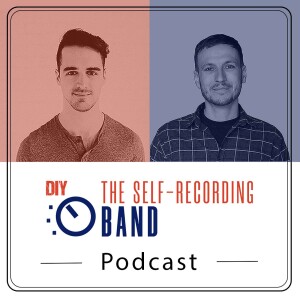
#166 - How Bus Processing Can Help Your Mixes Sound More Cohesive & Polished
 2023-04-19
2023-04-19
Send us a text
Here are three next steps for you to take:
1. Get our free video training & checklist, "Standout Mixes - The DIY Musician's Guide To Exciting Mixes That Stand Out And Connect":
theselfrecordingband.com/standoutmixes
-
2. Apply for The Self-Recording Syndicate, our personalized coaching program!
It all starts with a free first call where we talk about your music, give you feedback and a step-by-step action plan that you can then implement on your own, or together with us.
Best case: We end up working together and completely transform the sound of your music forever.
Worst case: You get an hour of free coaching and feedback.
Sounds fair? Cool. Apply now and book your free coaching call:
theselfrecordingband.com/call
-
3. Join the free Facebook Group ("The Self-Recording Band Community"):
theselfrecordingband.com/community
--
Episode show notes:
In the episode on piano recordings and sparse arrangements we briefly talked about using bus processing to glue things together and keep things a little more organic. Today we want to explore this further.
Let's discuss what bus processing is and how it can help you achieve a more cohesive and polished sound in your mixes!
On this episode, we explain exactly how we use bus processing in our own mixes. Routing, plugins, plugin order, settings and, of course, the reasons behind our decisions, based on the context of the mix.
Bus processing is just one tool in your mixing toolbox, and it should be used in conjunction with other techniques (clean up, shaping of important individual tracks, etc.) to achieve the best possible results.
Let's go!
-Benedikt
--
For full show notes go to: https://theselfrecordingband.com/166
If you have any questions, feedback, topic ideas or want to suggest a guest, email us at: podcast@theselfrecordingband.com
More Episodes
 2021-12-08
2021-12-08
 2021-10-13
2021-10-13
 2021-09-29
2021-09-29
 2021-09-22
2021-09-22
 2021-09-01
2021-09-01
Create your
podcast in
minutes
- Full-featured podcast site
- Unlimited storage and bandwidth
- Comprehensive podcast stats
- Distribute to Apple Podcasts, Spotify, and more
- Make money with your podcast
It is Free
- Privacy Policy
- Cookie Policy
- Terms of Use
- Consent Preferences
- Copyright © 2015-2024 Podbean.com





